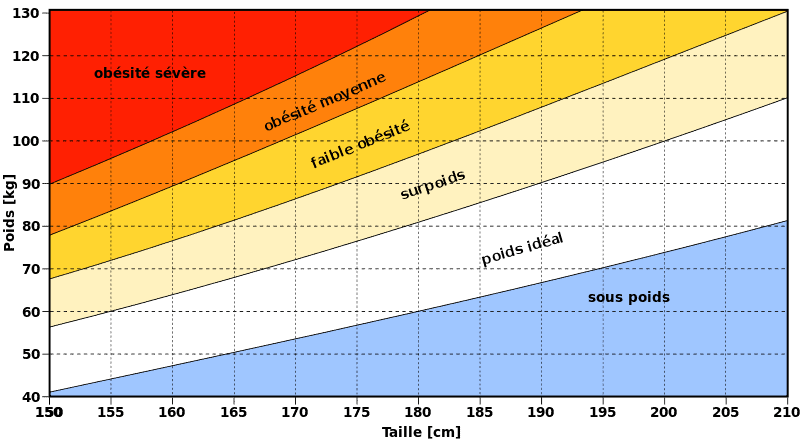YOUR BMI :
20.0
Body Mass Index (BMI)
What is your Body mass index ?
20.0
Body Mass Index (BMI)
Information : the BMI is generally a reliable method for adults between 20 and 65, but must not be used without appropriate adjustments for pregnant or breast-feeing women, endurance athletes or people with lots of muscle mass.
| MC (kg.m-2) | Interpretation (According to the WHO) |
| Less than 16,5 | Undernourished |
| 16,5 to 18,5 | Skinny |
| 18,5 to 25 | Regular weight |
| 25 to 30 | Overweight |
| 30 to 35 | Moderate obesity |
| 35 to 40 | Severe obesity |
| Over 40 | Morbid or extreme obesity |

The BMI is calculated simply by dividing the weight (in kg) by the square of the height (m). A "normal" or "ideal" BMI is between 18.5 and 25, often synonymous with good health. BMI = weight (kg) / height (m²) OR BMI = (weight in pounds x 703) / (height in inches x height in inches).
The calculation of the BMI allows you to quickly interpret your weight/height ratio. Following the evolution of your BMI is relevant to stay in shape and/or reach a weight objective.
There is no such thing as a generalized ideal weight. Each individual is free to set his or her own weight objective according to his or her health, morphology and physical activity.
The BMI is a relevant indicator to know your obesity rate. However, be careful with its interpretation, it does not take into account the distribution of liquids, the weight of bone mass and muscles.
The calculation of BMI is the same for a woman as for a man. The interpretation must be different since women naturally store more fat, and men more muscle.
The "normal" BMI is between 18.5 and 25. For a woman, there is an increase in overweight with age. The obesity rate in France increases from 11% for women aged 30-39 to 19% for those aged 60-69.